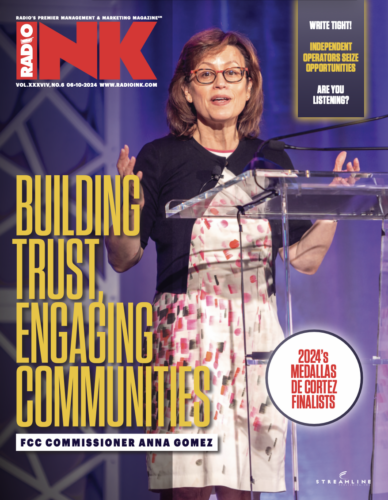
As recent headlines have shown, the strategy to connect effectively with voters through audio advertising is paramount as election campaigns gear up for November. Now Edison Research shows where audio ads reach voters, with radio playing a key role for the GOP.
The Share of Ear dataset reveals that audio ads remain a potent tool, with 84% of the voting-age population engaged with ad-supported audio daily.
Republicans were found to be heavy supporters of AM/FM radio, indicating a 9% higher engagement compared to the average. This demographic also shows a strong preference for SiriusXM’s ad-supported spoken-word channels. Both platforms provide a targeted avenue for reaching Republican listeners with tailored political messages.
Democrats demonstrated a significant affinity for podcasts, indexing 21% higher than the norm. The focused nature of podcast topics and the intimate, engaging format make podcasts an ideal medium for campaigns aiming to appeal to Democratic voters with specific interests or concerns.
Meanwhile, Independents, which will play a pivotal role in tipping the upcoming, tightly-contested election, show diverse audio preferences. They engage most with ad-supported streaming music and YouTube music videos. These platforms, especially YouTube, offer dual visual and auditory stimuli that can be powerful in swaying undecided voters.
While radio may have the most favorability with Republicans, that shouldn’t mean it’s cut from other strategies. In February, Nielsen demonstrated that early utilization of AM/FM radio ads not only extends reach among all voter segments, especially undecided and independent voters, but also outperforms television and connected TV in effectiveness.
Findings suggest reallocating 20% of a campaign’s media budget to traditional radio could recover lost voter engagement from previous campaigns and substantially enhance overall voter interaction. This strategy proves particularly effective with key groups like undecided voters, light TV viewers, and younger demographics such as Gen Xers and Millennials.
The study warns against the repetitive use of the same TV, digital, and CTV advertising mix, which has led to a 12% drop in voter reach. Despite common beliefs, CTV and digital platforms alone are insufficient to compensate for the declining reach of TV, as increasing their share in media plans could actually diminish voter engagement.
Integrating audio, including traditional radio, into a candidate’s media strategies not only diversifies reach but also significantly amplifies the impact of political campaigns in today’s fragmented media environment.





